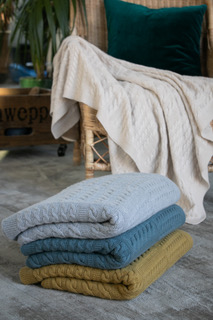Cashmere, often synonymous with luxury and comfort, has a rich and intricate history that spans centuries and continents. Originating from the high plateaus of Asia, cashmere wool is derived from the undercoat of the cashmere goat, known for its incredibly soft and fine fibers. This journey through the origins of cashmere reveals a story of tradition, quality, and enduring appeal.
The historical roots of cashmere
The name “cashmere” is derived from the old spelling of Kashmir, a region in the northern part of the Indian subcontinent. Historically, Kashmir has been a major center for the production of fine cashmere wool. However, the origins of cashmere goats trace back to the mountainous regions of Mongolia, China, and Tibet. These areas provide the harsh, cold climates necessary for the goats to develop their distinctive, warm undercoat.
For centuries, cashmere wool has been highly prized. The earliest references to cashmere can be found in the writings of travelers and historians who marveled at the softness and warmth of the wool produced in the region. During the 18th and 19th centuries, cashmere shawls from Kashmir became coveted items among European nobility and royalty. These shawls were intricately woven and embroidered, often taking years to complete, and they symbolized wealth and status.

The craftsmanship and quality of cashmere
The production of cashmere wool is a labor-intensive process that requires meticulous care and expertise. Each spring, cashmere goats naturally shed their winter coat. The finest fibers, which come from the underbelly and neck of the goat, are carefully collected by combing rather than shearing. This method ensures that only the softest and longest fibers are harvested, maintaining the superior quality of the wool.
After the fibers are collected, they undergo a rigorous cleaning and sorting process to remove any impurities. The fibers are then spun into yarn and woven or knitted into various garments. What sets cashmere apart from other types of wool is its exceptional softness, lightness, and insulating properties. Cashmere fibers are finer and smoother than those of regular sheep’s wool, making garments made from cashmere incredibly soft to the touch and comfortable to wear..
Today, cashmere remains a symbol of luxury and elegance. However, the industry faces challenges related to sustainability and ethical practices. Overgrazing by cashmere goats can lead to environmental degradation, threatening the delicate ecosystems of the regions where they are raised. To address these concerns, many producers are adopting more sustainable and ethical practices, such as rotational grazing and supporting local herding communities.

